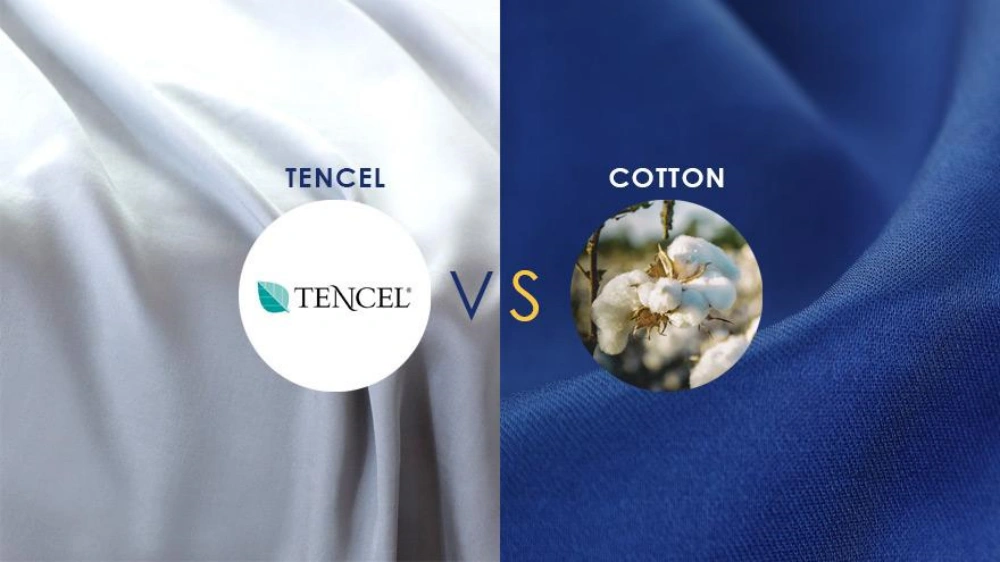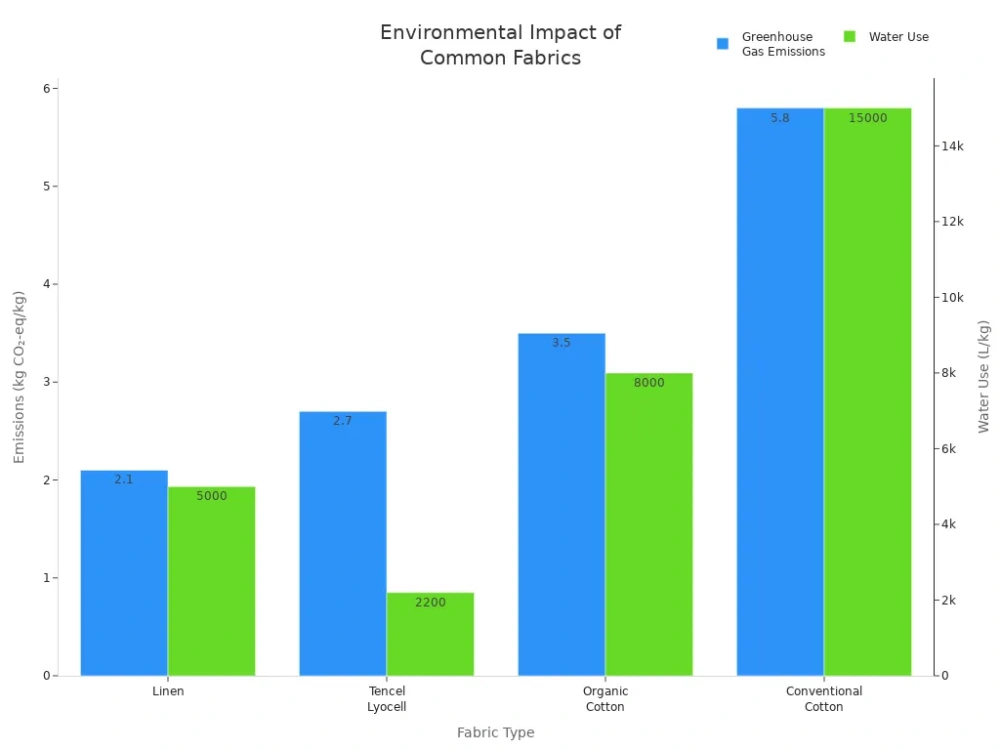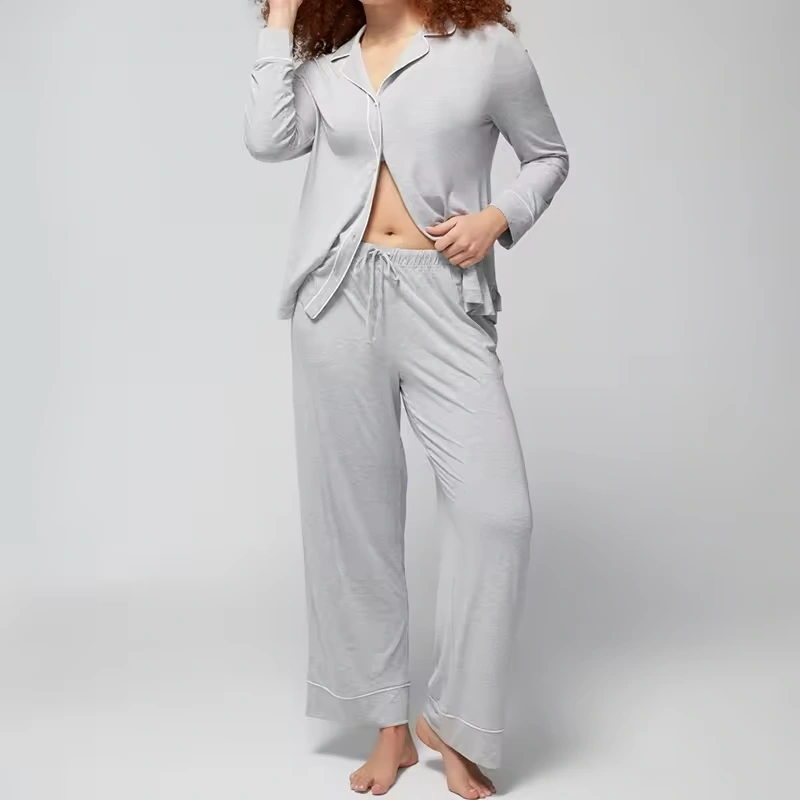If you’ve ever wondered what is tencel fabric, you’re not alone. Tencel comes from wood pulp, making it a branded lyocell fiber known for its silky softness and impressive breathability.
You’ll love how eco-friendly and biodegradable it is, which makes it a favorite for conscious shoppers. Take a look at this table—Tencel holds 35% of the sustainable fiber market, just behind organic cotton:
| Sustainable Fiber Type | Market Share (%) |
|---|---|
| Organic Cotton | 40 |
| Tencel | 35 |
| Linen | 25 |
If you care about comfort or the planet, Tencel stands out among today’s textile choices.
Key Takeaways
- Tencel is a soft, breathable fabric made from wood pulp using an eco-friendly closed-loop process.
- It absorbs moisture well, keeps you cool, and is gentle on sensitive skin.
- Tencel uses significantly less water and fewer chemicals than cotton, making it a more environmentally friendly choice.
- Compared to rayon and modal, Tencel feels silkier and requires less care.
- To keep Tencel clothes fresh, wash them in cold water, avoid heat, and air dry whenever possible.
What is Tencel Fabric?

Definition
You might be asking yourself, What is Tencel fabric? Tencel is actually a branded form of Lyocell fiber, made by the Austrian company Lenzing AG. They use wood pulp from trees like eucalyptus, beech, or spruce. The process stands out because it uses a closed-loop system that recycles water and solvents, making it much more eco-friendly than many other fabrics.
When you touch Tencel, you’ll notice how soft and smooth it feels. The fabric drapes beautifully and feels gentle against your skin. People love it for clothing that sits close to the body, like shirts, dresses, and even bedding.
If you care about the environment, you’ll appreciate that Tencel is biodegradable and comes from renewable resources.
Tencel’s official definition highlights its softness, breathability, moisture-wicking ability, and eco-friendly production. You get a fabric that feels luxurious and supports a healthier planet.
Key Features
So, what is Tencel fabric known for? Let’s break down the features that make it special:
- Softness: Tencel feels smoother than cotton. Expert panels say it’s one of the softest fabrics you can wear. You’ll notice the difference right away.
- Breathability: The unique nanofibril structure in Tencel fibers creates tiny channels. These channels help air flow and wick moisture away from your skin. You stay cool and dry, even on hot days.
- Moisture Management: Tencel absorbs twice as much moisture as cotton. This means it keeps sweat away and helps prevent odors and bacteria from building up.
- Hypoallergenic: The smooth surface is gentle on sensitive skin. If you have allergies or skin issues, Tencel can be a great choice.
- Thermoregulation: Tencel helps your body maintain a comfortable temperature. It wicks moisture and releases it into the air, so you don’t feel sticky or clammy.
- Eco-Friendliness: The closed-loop production system recycles almost all water and solvents. You get a fabric that’s kind to the planet and fully biodegradable.
- Beautiful Drape: Clothes made from Tencel hang nicely and move with you. The fabric resists wrinkles, so you look polished with less effort.
If you’re still wondering what Tencel fabric is, just remember: it’s a modern textile that combines comfort, performance, and sustainability. You get a fabric that feels good, works hard, and helps protect the environment.
Production Process
How Tencel is Made?
You might wonder how Tencel goes from trees to the soft fabric you wear. The process starts with wood pulp from fast-growing trees like eucalyptus. These trees grow on sustainably managed farms, so you know the source is responsible.
Manufacturers use a special amine oxide solvent to dissolve the wood pulp. This chemical is non-toxic and helps turn the pulp into a smooth, soft fiber. What makes Tencel stand out is its closed-loop system.
Almost all the solvent—about 99%—gets recovered and reused. This means very little waste or pollution leaves the factory. You get a fabric that feels good and does good for the planet.
Tencel belongs to the Lyocell family, which sets it apart from other cellulosic fibers like rayon and modal. While rayon and modal also come from wood pulp, their production uses harsher chemicals and creates more waste. Tencel’s process is cleaner and safer for workers and the environment.
Tip: When you choose Tencel, you support a process that values both quality and sustainability.
Environmental Impact
Tencel’s production uses much less water than cotton. Cotton farming needs a lot of water and pesticides, but Tencel’s closed-loop system keeps water use low and avoids harmful chemicals. Take a look at this comparison:
| Fiber Type | Water Consumption per Kilogram | Additional Notes |
|---|---|---|
| Cotton | Over 20,000 liters | Requires high water and pesticides |
| Tencel | 10-20 times less than cotton | Uses fast-growing eucalyptus, low water, closed-loop process reusing 99% solvents |
| Rayon | N/A | Uses harmful chemicals, less sustainable than Tencel due to pollution and worker hazards |
Tencel fibers break down naturally, so you don’t have to worry about microplastic pollution. When you pick Tencel, you help reduce water waste, chemical pollution, and landfill buildup. That’s a win for you and the planet.
Tencel vs Others
Tencel Fabric vs Cotton

When you compare Tencel to cotton, you’ll notice some big differences. Tencel uses a closed-loop system that recycles almost all water and solvents. Cotton, even organic cotton, needs a lot more water and land. Eucalyptus trees for Tencel grow fast and thrive on land that isn’t good for farming, while cotton needs flat, well-irrigated fields.
This means Tencel has a much smaller environmental footprint. You also get fewer greenhouse gas emissions and less pesticide use with Tencel. Studies show Tencel uses 30-40% less non-renewable energy than cotton. If you want a fabric that’s gentle on the planet, Tencel is a smart choice.
Tencel vs Rayon and Modal
Tencel, rayon, and modal all come from wood pulp, but their production and performance set them apart. Rayon (also called viscose) feels soft but wrinkles easily and needs careful washing, often by hand or dry cleaning. Modal is tougher than rayon and resists shrinking, pilling, and creasing.
TENCEL™ Modal, a branded version, uses a closed-loop process like Tencel lyocell, making it more eco-friendly. You’ll find modal keeps its color well and feels flexible and breathable.
Tencel stands out for its silky feel, breathability, and sustainable production. You get a fabric that’s easy to wear and care for, without the high maintenance of rayon.
Tip: Tencel and TENCEL™ Modal both offer eco-friendly options, but Tencel lyocell leads in moisture management and softness.
Performance and Care
Tencel shines when it comes to comfort and easy care. You can wear Tencel garments more and wash them less because they resist odors and bacteria. When it’s time to clean, just turn your clothes inside out and use cold water on a gentle cycle. Skip the bleach and fabric softeners.
Air dry your Tencel pieces away from direct sunlight to keep them looking fresh. Tencel resists wrinkles, so you’ll spend less time ironing. If you need to smooth out a wrinkle, a quick steam or a warm iron with a pressing cloth works best. With these simple steps, you’ll keep your Tencel clothes soft, strong, and looking new.
Pros and Cons
Advantages
When you choose Tencel, you get a fabric that feels great and works hard for you. Most people notice the softness right away. In fact, 85% of buyers say comfort is their top reason for picking Tencel.
You’ll also find that Tencel keeps you cool and dry, thanks to its quick-dry and moisture-wicking features. Wrinkles don’t stand a chance, so your clothes look fresh all day.
“A well-engineered linen-Tencel blend at 120 gsm can outperform heavier cotton in moisture management and durability. The key lies in mastering the weave, not merely in counting grams.”
— Dr. Elena Martinez, Textile Science Professor
If you care about the planet, Tencel stands out for its eco-friendly story. The closed-loop process recycles 99% of solvents and uses much less water than cotton. Many shoppers—67%—look for eco-certifications, and Tencel delivers. Take a look at how Tencel compares to other fabrics:
| Fabric Type | Greenhouse Gas Emissions (kg CO₂-eq/kg) | Water Use (L/kg) | End-of-Life Characteristics |
|---|---|---|---|
| Linen | Low (2.1) | Moderate (5,000) | Fully biodegradable and compostable |
| Tencel Lyocell | Low (2.7) | Low (2,200) | Closed-loop recycling, 99% solvent recovery |
| Organic Cotton | Moderate (3.5) | High (8,000) | Biodegradable if properly disposed of |
| Conventional Cotton | High (5.8) | Very High (15,000) | Biodegradable |

You also get value for your money. While Tencel sits in the premium range, 45% of shoppers say they’re happy to pay more for these benefits.
Disadvantages
No fabric is perfect, and Tencel has a few things you should keep in mind. Tencel can be more expensive than basic cotton or polyester. You might notice this when you shop for Tencel clothing.
Some people find that Tencel needs a bit more care. High heat can damage the fibers, so you should avoid hot water and high dryer settings. If you want your Tencel clothes to last, gentle washing and air drying work best.
Tencel’s smooth surface can sometimes show oil stains more easily. You may need to treat spots quickly to keep your clothes looking their best. While Tencel resists wrinkles, it can crease if left crumpled for a long time. A quick steam or light iron usually fixes this.
If you want a fabric that balances comfort, sustainability, and easy care, Tencel gives you plenty of reasons to make the switch.
Uses and Care
Common Uses
You see Tencel popping up everywhere these days. Many brands love it for its comfort and eco-friendly story. You might find Tencel in soft t-shirts, flowy dresses, and even high-performance sportswear.
Bedding and home textiles often use Tencel because it feels cool and smooth against your skin. Underwear, yoga pants, and even socks get a boost from Tencel’s breathability.
Friendtex, a trusted garment manufacturer, uses Tencel and other sustainable fabrics in their product lines. They help brands create everything from everyday basics to stylish fashion pieces. If you want to build a collection with a sustainable edge, Friendtex can help you make it happen.
Take a look at some leading brands that use Tencel in their collections:
| Brand | Country | Sustainability Focus | Product Types Using Tencel | Price Range (USD) |
|---|---|---|---|---|
| Allbirds | United States | Sustainable footwear and apparel | Footwear and apparel | Starting at $95 |
| Amour Vert | United States | High-quality, sustainable women’s clothing | Dresses, blouses | $50 – $200 |
| Tentree | N/A | Environmental sustainability (tree planting) | Various Tencel clothing | $14 – $328 |
| Toad&Co | N/A | Travel-friendly clothing | Travel clothing made from Tencel | N/A |
| Organic Basics | N/A | Sustainable basics with eco-friendly materials | Basics crafted from Tencel | $16 – $48 |
You can see that Tencel fits into many styles and price points. Whether you want basics or something special, you have options.
Care Tips
Tencel makes life easier when it comes to laundry. You don’t need fancy detergents or special routines. Just follow a few simple steps to keep your clothes looking great:
- Wash Tencel garments in cold water on a gentle cycle.
- Turn items inside out to protect the surface.
- Use mild detergent and skip bleach or fabric softeners.
- Air dry your clothes or use a low-heat setting if you must use a dryer.
Tip: High heat can damage Tencel fibers. Always avoid hot water and high dryer temperatures.
If you spot a wrinkle, a quick steam or a warm iron with a pressing cloth works wonders. Tencel resists odors, so you can wear your clothes more between washes. With these easy steps, you keep your Tencel pieces soft, strong, and ready for anything.
Conclusion
You now know what is tencel fabric and why it stands out. Tencel gives you softness, breathability, and a smaller impact on the planet. You get clothes that feel good and last. Here’s a quick recap:
- Tencel feels smooth and keeps you cool.
- It uses less water and fewer chemicals than cotton.
- You help the environment with every purchase.
Ready to try something new? Choose Tencel for comfort and sustainability in your next wardrobe update.
FAQ
What makes Tencel different from other fabrics?
You get a fabric that feels softer and cooler than cotton. Tencel comes from wood pulp and uses a closed-loop process. This means less water and fewer chemicals. You help the planet every time you choose Tencel.
Can I machine wash Tencel clothes?
Yes, you can! Just use cold water and a gentle cycle. Turn your clothes inside out. Skip bleach and fabric softeners. Air dry for best results. Your Tencel pieces will stay soft and last longer.
Is Tencel good for sensitive skin?
Absolutely. Tencel feels smooth and gentle. The fibers do not irritate your skin. Many people with allergies or sensitive skin love wearing Tencel. You can enjoy comfort all day.
Does Tencel wrinkle easily?
Tencel resists wrinkles better than cotton. If you see a few creases, a quick steam or a warm iron fixes them. You spend less time ironing and more time enjoying your clothes.


